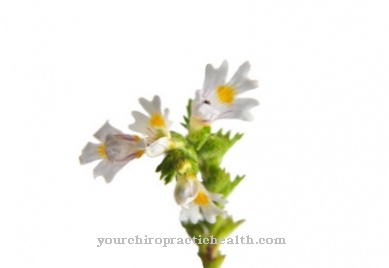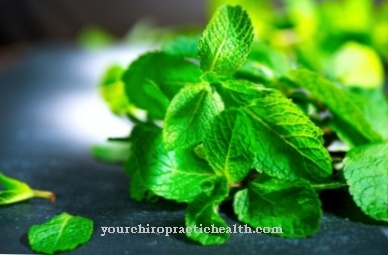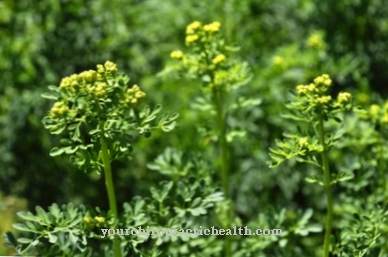lily of the valley is probably one of the most beautiful symbols of May. But the lily of the valley is not only a beautiful spring flower, it also has a very long tradition as a medicinal plant.
Occurrence & cultivation of the lily of the valley

The height can vary between 10 and 30 cm. In the spring, long, oval-shaped, pointed leaves grow out of the rhizome, arranged in pairs and initially rolled up. A delicate stem with a cluster of small, white, bell-like flowers that slopes to one side later grows from its center. The lily of the valley has thin roots (rhizomes) that creep up to 50 cm deep in the ground. The flowers have an intense, attractive scent that attracts insects to pollinate. The flowering period lasts from April to June, from midsummer red berries emerge from the flowers.
All parts of the plant are highly poisonous. In 2014 the lily of the valley was named poisonous plant of the year. Until its toxicity was discovered, it had a long tradition as a medicinal plant in folk medicine since ancient times. Today its importance is reduced to conventional medicine because of the toxicity of all parts of the plant. Because of the appearance of its leaves, collectors can confuse it with the edible wild garlic.
Effect & application
Despite its highly poisonous effects, the lily of the valley is also a valuable medicinal plant that has a positive effect on various types of heart disease. Since around the 15th century, descriptions of various areas of application have appeared in herbal books for the first time. The German doctor, preacher and botanist Hieronymus Bock advises Meyen flowers for epilepsy, dizziness, eye problems and heart problems.
The doctor and botanist Tabernaemontanus also recommends its effect in the case of fainting, gout, ulcers and other diseases. Paracelsus also emphasizes its strengthening effect. Like many other plants, it has long been considered a panacea for a wide variety of ailments. But after the highly poisonous effect was known, its importance in folk medicine disappeared. In return, the lily of the valley has gained a firm place in conventional medicine since the 19th century, when researchers discovered the glycosides of the lily of the valley as active substances that strengthen the heart. Like the thimble (digitalis) it is used there for various heart problems.
The effect of the lily of the valley is similar to the foxglove (digitalis), which has long been the treatment of heart disease, but it is less toxic than this. Nevertheless, it is very toxic and should only be used on the basis of a doctor's dosage so that there are no symptoms of poisoning.
Dried leaves, stems and flowers, which are harvested during the main flowering period, because the active ingredient content is highest at this time, are used to manufacture the medicinal products. All parts of the plant are equally poisonous and contain highly toxic steroid glycosides such as convallatoxin and convallotexol.
They are mainly used in finished preparations. These preparations require a prescription and contain a precisely balanced dose of effective glycosides. They are available as tablets, coated tablets or drops. It should only be taken under medical supervision in order to avoid serious side effects.
Importance for health, treatment & prevention
Because lily of the valley preparations strengthen the heart, they are mainly prescribed for mild heart failure in stages I and II, for example when symptoms are only noticeable during greater physical exertion. The active ingredients of the lily of the valley herb have a strengthening effect and promote the work of the heart, which can improve symptoms such as arrhythmias, shortness of breath, increased heart rate and poor performance.
The preparations also help with pressure load on the right ventricle due to an increase in pressure in the lungs and with heart-related asthma. Since a certain daily dose must not be exceeded because of the toxic side effects, it is not advisable to prepare a tea from lily of the valley herb yourself, because overdosing can lead to nausea, vomiting, diarrhea and other gastrointestinal problems.
With the exception of homeopathy, self-medication is not recommended. In homeopathy it is used to treat cardiac arrhythmias, heart failure with water retention, chest tightness and smoker's heart. All other preparations require a prescription for a reason, as there are various contraindications:
- pregnancy and breast feeding period
- Childhood
- severe heart failure
- heartbeat too slow (bradycadia)
- Rhythm disorders due to conduction disorders in the heart chambers
- disturbed electrolyte balance
If other drugs are taken at the same time, interactions must be taken into account. The toxicity of lily of the valley preparations lies precisely in the heart-strengthening glycosides. They are rather poorly absorbed from the gastrointestinal tract, so the toxic effect does not show up immediately. In the case of severe poisoning, the blood pressure first rises and then falls again. Cardiac arrhythmias develop, which in the worst case can end in fatal ventricular fibrillation. Even if there is only a slight suspicion of poisoning, an emergency doctor should be called immediately and the poison control center contacted if necessary.



























